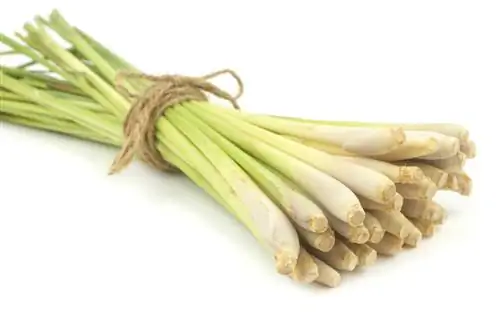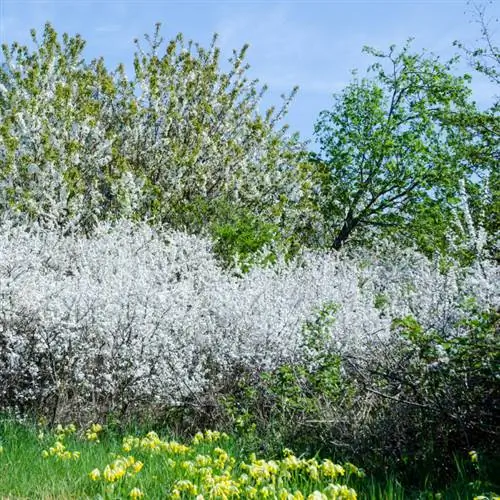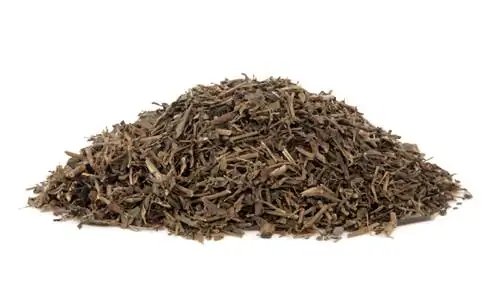- Author admin [email protected].
- Public 2023-12-16 16:46.
- Last modified 2025-01-23 11:20.
In its Asian homeland, lemongrass is just as common a spice as parsley or chives in this country. The delicate aroma goes well with many dishes and gives them an exotic touch. Since lemongrass has a hard, fibrous structure, it is unsuitable for direct consumption. You can find out how to prepare and prepare the Asian herb for eating, along with other interesting facts, in this article.

How do I prepare lemongrass for eating?
When eating with lemongrass, only the white parts and the lower thickening (bulb) of the stems are used. Remove outer, fibrous leaves and dark green leaf parts, cut or grind the desired portions into fine rings and cook them to develop the full aroma.
Lemongrass tastes best when freshly harvested
Lemongrass is no longer an unknown exotic species and you can buy the fresh herb in any well-stocked supermarket. In Asian stores you can buy frozen lemongrass under the name Sereh. Dried lemongrass is also offered here. Since lemongrass loses much of its lemony, spicy aroma during the drying process, we recommend using fresh or frozen products. Lemongrass is particularly tasty if you cultivate it at home and harvest it fresh before preparing the food.
Use in the kitchen
Although all parts of the grass plant are edible and non-toxic, only the white parts and the lower thickening (bulb) of the stems are used for cooking. Remove the outer, very fibrous leaves of the leaf cluster and cut off the dark green leaf parts before preparation.
Then cut the bulb and the white parts of the leaves into very fine rings. Use a very sharp knife with saw teeth for this work, as lemongrass is quite hard. Depending on your personal preference, you can additionally grind these fine lemongrass slices.
Always cook with lemongrass
The edible lemongrass only develops its full aroma if you cook it for a long time. Asian housewives break the freshly harvested stems several times and add them directly to the food. This has the advantage that you can sieve the tough stalks out of the dish when serving and don't have to chew on small lemongrass shavings. To ensure that all the essential oils come out, we recommend that you also squeeze the broken stems with the back of a knife or a flat iron.
Little known: Lemongrass is a mild natural medicine
The green leaf parts of lemongrass are far too good to be thrown away. You can make delicious lemongrass tea from the crushed stalks. Well chilled, the drink is refreshing on hot summer days. This tea is also a very good home remedy for summer gastrointestinal diseases because it has an antispasmodic, pain-relieving and antimicrobial effect.
Tips & Tricks
The aroma of lemongrass also goes perfectly with traditional German dishes. For example, autumnal pumpkin soup gets a pleasantly sour, Asian note from a few lemongrass stalks cooked in it.






